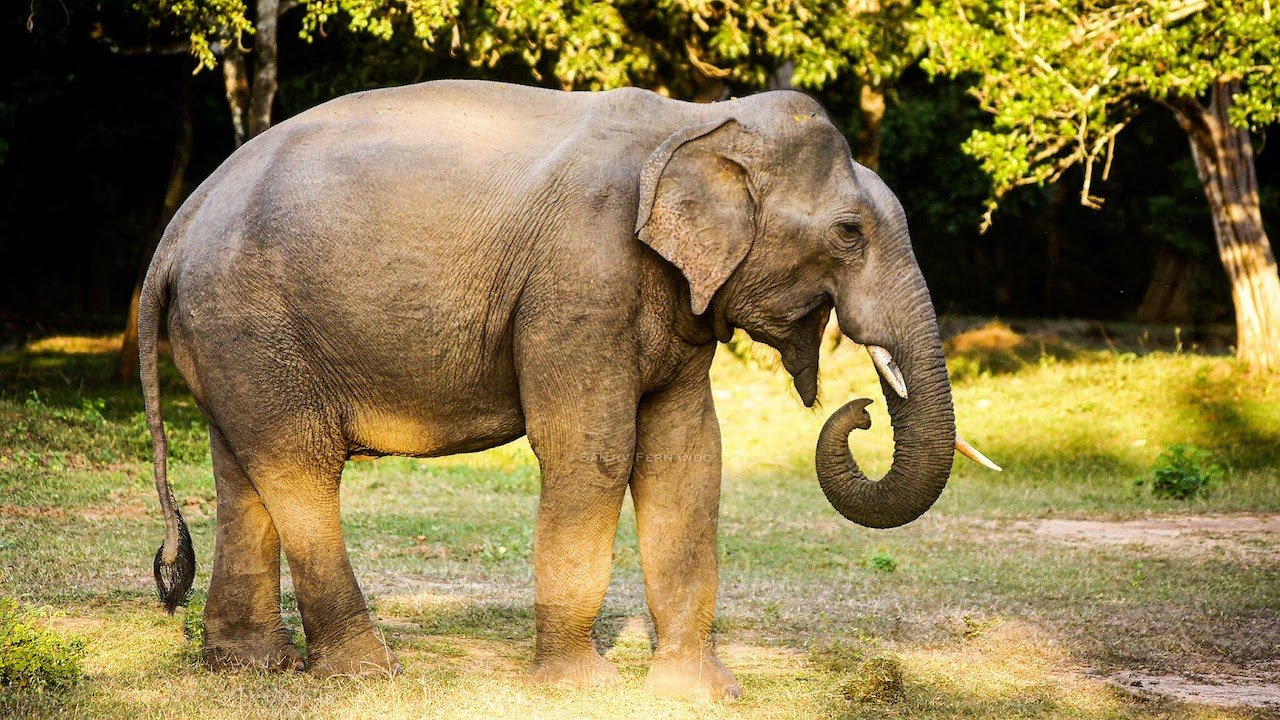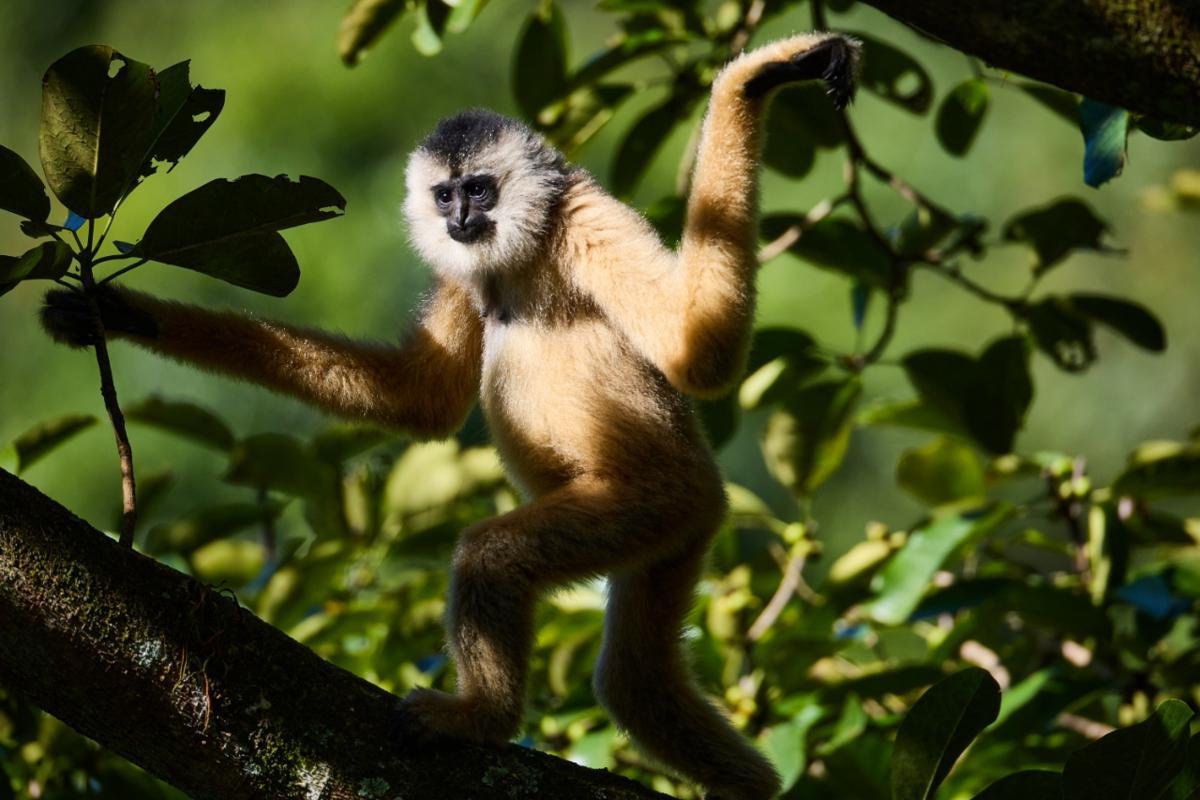Protecting China's Precious: A Spotlight on Endangered Species
Earth is home to more than 16,000 species of plants, animals, fungi, and algae that are currently listed as endangered on the IUCN (International Union for Conservation of Nature) Red List of Threatened Species. Each year on the third Friday of May, Endangered Species Day is observed to raise awareness about the ongoing challenges faced by endangered species and to celebrate the success stories resulting from conservation efforts.
Ranked among the world’s 17 mega-diverse countries, China boasts a remarkable variety of environments, encompassing deserts to tropical forests, and harbors over 34,000 known species of animals and plants. This makes it the third-most biodiverse nation on the planet. As we contemplate the significance of Endangered Species Day, it is essential to acknowledge the current status of endangered species in China.
Now, let's delve into the plight of 10 of China's endangered species!
Golden Snub-Nosed Monkey
©National Geographic
First on our roster of endangered species in China is the rare golden snub-nosed monkey, an exclusive species found solely within China, notably in the provinces of Gansu, Hubei, Shanxi, and Sichuan. These monkeys boast a body length of about 70 centimeters, with tails sometimes even longer. Named for their distinctive stump nose with forward-facing nostrils. With an estimated population of 3,000 individuals, golden monkeys are labeled as endangered by the IUCN. Urban and agricultural development, along with hunting and poaching, pose significant threats to their survival.
Regarded as some of the rarest and most precious species globally, snub-nosed monkeys benefit from top-tier protection by the state. Numerous government agencies and independent organizations have instituted programs aimed at safeguarding this species, such as the Yunnan Golden Monkey Protection Network. A 2020 survey also indicates a gradual increase in the number of wild golden snub-nosed monkeys in Hubei.
Conservation Status: Endangered
South China Tiger
©VCG Photo
The South China tiger, also known as the Chinese Tiger or Xiamen Tiger, is among the smallest tiger subspecies. Indigenous to the forests of central and southern China, it holds the unenviable title of being the most critically endangered tiger, according to the IUCN, owing to poaching, habitat loss, and human-tiger conflicts. Today, just around a dozen of these majestic creatures roam the wild in China, with fewer than 100 held in captivity across various zoos nationwide, including the Shanghai Wild Animal Park and Guangzhou Zoo.
Similar to golden monkeys, South China tigers enjoy top-tier protection from the State. The non-governmental organization Save China’s Tigers, with the backing of China’s State Forestry Administration, has devised a plan to reintroduce captive-born individuals into expansive enclosures in southern China.
Conservation Status: Critically Endangered
Sousa Chinensis
The Sousa chinensis, also known as the Chinese white dolphin, is a fascinating marine mammal found primarily in the waters of Southeast Asia, including the South China Sea, the Pearl River Delta, and the waters off the coasts of Hong Kong, Macau, and southern China. These dolphins inhabit shallow coastal areas, estuaries, and mangrove swamps, preferring warm, tropical waters.
Despite their stunning appearance and playful nature, Sousa chinensis faces numerous threats that have rendered them a vulnerable species. Human activities such as habitat destruction, coastal development, pollution, entanglement in fishing gear, and boat traffic pose significant risks to their survival. Additionally, overfishing and depletion of prey species further exacerbate their vulnerability. The Indo-Pacific humpback dolphins' slow reproductive rate and limited distribution make them particularly susceptible to population declines.
Conservation Status: Vulnerable
Asian Elephant
©Sanjiv Fernando
Asian elephants, the largest terrestrial mammals on the continent, can grow to over 6 meters (20 feet) in length and weigh approximately 500 kilograms (1,100 pounds). These majestic creatures inhabit forests and grasslands across the Indian subcontinent and Southeast Asia, ranging from India in the west to Nepal in the north, Sumatra in the south, and Borneo in the east. In China, they are found only in the prefectures of Xishuangbanna, Simao, and Lincang in southern Yunnan.
Over the years, the population of Asian elephants has been steadily declining, prompting the IUCN to classify them as endangered. As of 2020, it was estimated that there were only around 300 individuals left in China. Due to their critically low numbers, Asian elephants receive first-level protection, and various national and regional reserves have been established to safeguard their habitats and ensure their survival.
Conservation Status: Endangered
Black Crested Gibbon
©Huang Songhe/for China Daily
The critically endangered black crested gibbon is a species found in China, Laos, and northern Vietnam. Renowned as the fastest non-flying arboreal mammals, gibbons can achieve speeds of up to 58 kilometers per hour (35 miles per hour) and soar as high as 61 meters (200 feet) above the forest floor. In commemoration of International Gibbon Day 2020, the IUCN Save Our Species launched a new conservation initiative dedicated to saving the four Critically Endangered and Endangered gibbon species.
However, the number of wild individuals continues to decline, primarily due to poaching, with gibbon bones often utilized in traditional medicine as 'monkey bone balm' or tonic additives. Furthermore, habitat loss resulting from urban expansion and agricultural land conversion poses another significant threat to their survival.
Conservation Status: Critically Endangered
Crested Ibis
©Zhang Yueming/For China Daily
The crested ibis, scientifically known as Nipponia nippon, is a majestic bird species native to East Asia. Historically, these elegant birds were widespread across China, Japan, Korea, and Russia's Far East, inhabiting various wetland habitats such as marshes, swamps, and riverbanks. However, due to habitat loss, pollution, and overhunting, their populations have drastically declined, rendering them critically endangered.
Today, the crested ibis is primarily found in a few isolated regions of China, particularly in Shaanxi, Sichuan, and Henan provinces. These areas are crucial for their survival, providing suitable breeding and foraging grounds. Despite conservation efforts, such as captive breeding programs and habitat restoration initiatives, crested ibises remain at risk due to ongoing threats like habitat destruction, pesticide use, and human disturbance. As a result, concerted conservation actions are essential to ensure the long-term survival of this iconic species.
Conservation Status: Endangered
Wild Bactrian Camel
©Noo/Shutterstock.com
The critically endangered wild Bactrian camel, found in regions of northwestern China and southwestern Mongolia, possesses a distinctive trait separating it from its Arabian relatives: two humps instead of one. These humps store fat that can be converted to water and energy, enabling them to endure extended periods without sustenance, a vital adaptation in harsh desert environments.
Recognizing the urgent need for conservation, the International Union for Conservation of Nature (IUCN) added the wild Bactrian camel to its list of critically endangered species in 2002. This designation spurred Chinese officials into action, leading to the implementation of conservation programs aimed at restoring the camel's population. Encouragingly, these efforts have yielded positive results, with the population gradually increasing from approximately 600 individuals in 2004 to around 700 presently.
Conservation Status: Critically Endangered
Red Panda
The red panda, a beloved symbol of biodiversity, inhabits the dense forests of the Eastern Himalayas and southwestern China, with nearly half of its habitat located in the Eastern Himalayas. With its distinctive reddish-brown fur, bushy tail, and masked face, the red panda is instantly recognizable and beloved by many. Despite its widespread popularity, the red panda faces numerous threats to its survival, primarily due to habitat loss and fragmentation caused by deforestation, agricultural expansion, and human encroachment.
Despite its widespread popularity, the red panda faces numerous threats to its survival, primarily due to habitat loss and fragmentation caused by deforestation, agricultural expansion, and human encroachment. Additionally, illegal poaching and trapping for the exotic pet trade pose significant dangers to their population. Climate change also presents challenges by altering their habitat and disrupting their food sources. The rare red panda has experienced a sharp decline in numbers—approximately 50% in 20 years. As a result of these combined pressures, the red panda is classified as an endangered species by the International Union for Conservation of Nature (IUCN).
Conservation Status: Endangered
Chinese Alligator
The Chinese alligator, also known as the Yangtze alligator, is capable of reaching lengths nearing 2 meters and weighing around 40 kilograms, and stands as the most endangered species within the crocodilian family. With a scant estimated population of merely 120 individuals remaining in the wild, urgent action is imperative to preserve its existence. The precipitous decline in numbers primarily stems from severe habitat fragmentation and loss, compounded by contamination of its food sources from agricultural fertilizers and pesticides.
Endemic to East China, this species holds the critical status of "critically endangered" on the IUCN Red List, with governmental recognition as a Class I Endangered Species. Efforts to safeguard its habitat and mitigate human-induced threats are indispensable to avert its slide toward extinction.
Conservation Status: Critically Endangered
Chinese Sturgeon
Concluding our roster of endangered species in China is the Chinese sturgeon, one of the oldest fish species known to man, with its ancient lineage tracing back to the Cretaceous period. Once widely distributed across China, Japan, and the Korean Peninsula, this majestic creature now faces severe endangerment within China's borders. Renowned as a "national treasure," it garners strict protection from the Chinese government due to its immense size, reaching up to 5 meters in length and weighing between 200 to 500 kilograms, making it the largest sturgeon globally.
However, habitat loss and overfishing pose grave threats to its survival, compounded by its sensitivity to increasing river traffic noise and the risk of harm from boat propellers. Efforts to conserve this iconic species are paramount to prevent its further decline and ensure its continued presence in our waters.
Conservation Status: Critically Endangered













